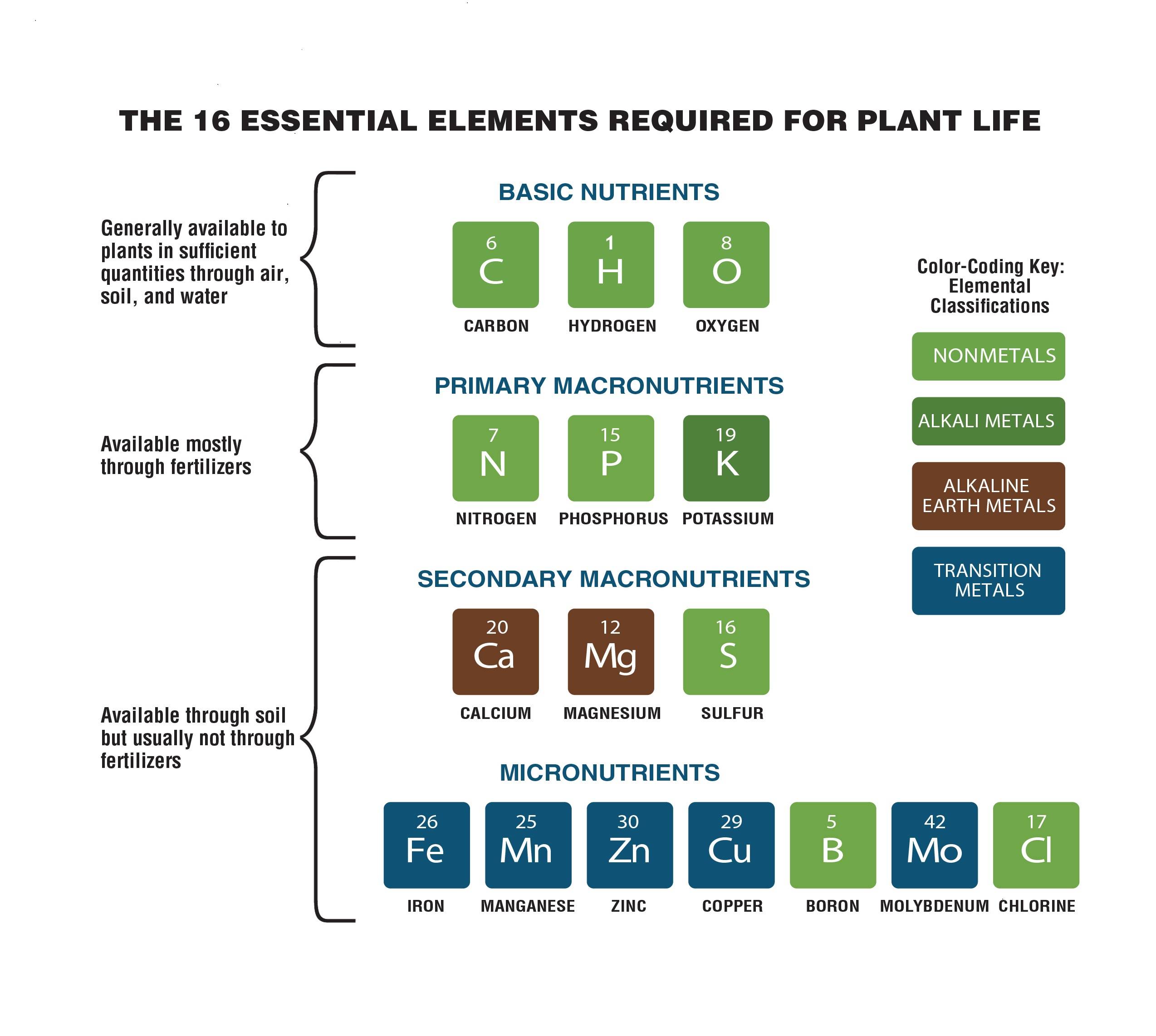Growing Green on the Red Planet
By Roberto Molar Candanosa April/May 2017
In The Martian, a science fiction book by Andy Weir and a Hollywood movie blockbuster, Mark Watney is stranded on Mars after his fellow NASA astronauts think he died and left the Red Planet without him. Watney is left with space suits and a controlled-environment habitation module (or Hab), but he does not have enough food and water to survive until NASA sends a rescue mission.
Several years could go by while Watney waits to be rescued, and many things could go wrong. For example, if the system that provides him with oxygen stops working, Watney could die, because the atmosphere of Mars does not contain enough oxygen for humans to survive. The good news is that Watney, who is a botanist, has some potatoes in the Hab that he can use to produce more food as he waits for NASA to rescue him. The bad news is that Mars is a desert planet, where no plants have ever grown before.
In the story, Watney’s botany skills help him survive the ordeal. He uses the potatoes NASA packed for his Mars expedition along with his own feces and manages to grow potatoes in a small farm inside the Hab. Also, his knowledge of chemistry allows him to make water, which he uses to irrigate the potatoes.
Improvising a Martian potato farm and producing water from scratch sound more fiction than science. But research suggests that some soils on Mars could be used to grow plants.
So, how exactly did Watney fertilize Martian soil? Is it possible to make water on Mars?
Earth-like planet
Even though Mars has an environment that is harsh for life as we know it, it appears to be the most habitable planet in our solar system, besides Earth. According to NASA, billions of years ago, Mars even had oceans like our own. Some places on Earth have been used to study Mars, since their environments are somewhat similar to conditions on Mars. Parts of Antarctica, Hawaii, and South America are examples of such places.
Scientists have been studying Mars since the early 1960s. They have sent small spacecraft that flew by, orbited, and landed on Mars. These spacecraft found that although some places on Earth look like Mars, the Red Planet is indeed a harsh environment for life.
The atmosphere on Mars has about 95% carbon dioxide, which would make it impossible for humans to breathe. Mars is also much colder than Earth. This is mostly because the Red Planet is farther away from the sun than Earth. NASA’s Viking mission, which landed on Mars in 1976, recorded average temperatures of –81 ºF, which is colder than either the North or South poles here on Earth. If exposed to Mars’s temperatures, plants, humans, and other living beings would freeze.
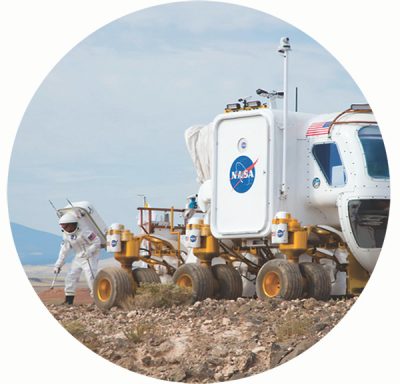
Fertilizing Mars
Research suggests Martian soil has some of the nutrients plants need to grow and survive (see “Plants’ Nutrients,” right). But because of Mars’s extremely cold conditions, plants such as Watney’s potatoes would need to grow inside a controlled environment, such as his Hab. Also, just like on Earth, nutrients in Martian soil may vary from place to place. So, people stranded on Mars should be prepared to turn to ingenious ways for making the soil more suitable for plant growth—even if the only option is using their own feces, as Watney did.
When soils are rich in nutrients—such as nitrogen, phosphorus, and potassium—crops grow well. But when the soils are not as rich—with even just one of the needed nutrients in low supply—plants would not grow as well. Fertilizers help farmers to double or triple their crop yields and contain 5% or more of primary plant nutrients. These fertilizers also supply nutrients to the crops that some soils do not have.
Here on Earth, experts encourage using organic waste, or manure, to fertilize soil, although U.S. environmental agencies regulate the use of manure to avoid transmission of viruses and bacteria that could contaminate harvests. Other sources of nutrients, such as organic food waste, are also useful. That is why, for example, some people mix banana peels or coffee grounds into soil in their gardens.
On Mars, Watney did not have any man-made fertilizers available to him. He was not planning to stay there for a long time, let alone having to farm there, so his feces acted as organic waste that contained nutrients. In fact, in earlier times, when technology was less advanced, farmers used their own sewage to provide important nutrients, such as nitrogen and phosphorous, to their land.
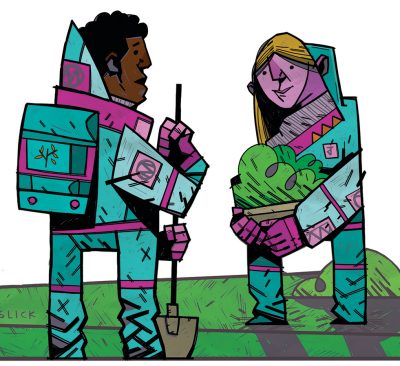
Thriving on essential nutrients
To create the energy they need to live, plants use a process called photosynthesis, which is a series of chemical reactions that convert water and carbon dioxide into sugars and oxygen. These chemical reactions can be summarized in the following way (in this case, the sugar is glucose (C6H12O6)):
6 CO2 (g) + 6 H2O (l) ⇾ 6 O2 (g) + C6H12O6 (aq)
To carry out photosynthesis, plants also need various nutrients, such as nitrogen, potassium, and phosphorus. Nitrogen is a key component of chlorophyll, the compound responsible for the green color of plants and for capturing the light needed for photosynthesis. Potassium helps to open and close tiny pores in leaves and stems that take in the water and the carbon dioxide used in photosynthesis. Phosphorus is involved in the chemical reactions that make up photosynthesis.
In contrast with plants, human beings and animals cannot harvest solar energy. Instead, humans obtain it from eating food, which comes from animals and plants and provides the energy we need to survive. Animals also get their energy from plants or other animals that eat plants. In that sense, everything we eat was once a plant.
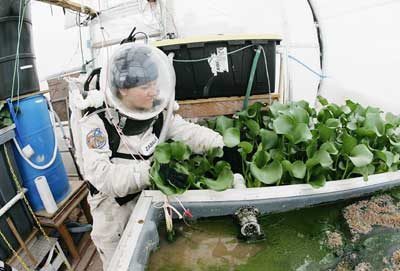
Growing crops on Mars
It is not easy to predict what we will or will not be able to do when we set foot on Mars. But as far as the chemistry that was conducted in The Martian, Watney’s scientific method checks out. Scientists have conducted plant experiments simulating Martian conditions using volcanic soil in Hawaii, which is known for its similarity to Martian soil. These experiments found that plants can actually grow in these soils.
There are other aspects future Mars explorers will need to consider when growing plants on that planet. As mentioned earlier, Mars’s atmosphere is mostly carbon dioxide, and plants need this gas just as much as we need oxygen to breathe.
Also, studies suggest that watering plants on Mars could require less water than on Earth. That is because water would flow differently through the Martian soil, thanks to the Red Planet’s gravity, which is approximately 38% that of Earth’s. In other words, anything on Mars would feel about three times lighter than on Earth. Therefore, under Martian gravity, the soil can hold more water than on Earth, and water and nutrients within the soil would drain away more slowly.
Some conditions would make it difficult for plants to grow on Mars. For example, Mars’s extreme cold temperatures make life difficult to sustain. Sunlight and heat reaching that planet is much less than what the Earth gets. This is because Mars is about 50 million miles farther away from the sun. Also, the Martian atmosphere is not as thick as Earth’s atmosphere, which keeps our planet warm.
In The Martian, when Watney accidentally exposes his farm to Mars’s cold temperatures, his potato plants freeze to death almost instantly. As mentioned earlier, Mars’s open air is just too cold for plants to survive.
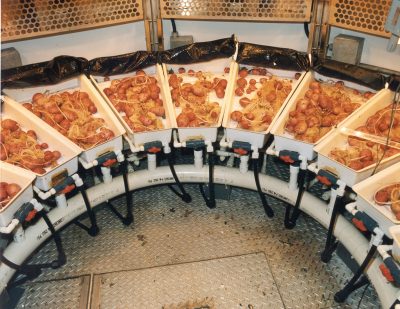
Making water on Mars
Water available from the Hab was not enough to sustain Watney or his farm until NASA rescued him. However, Watney was clever enough to think of a way to make water from scratch and irrigate his potatoes.
Making water does not sound like a complicated process: take oxygen, add hydrogen, and burn them together to create water. But Watney did not have hydrogen at his disposal. The oxygen, on the other hand, was easy to get. The Hab’s oxygenator liberated oxygen from the abundant carbon dioxide in Mars’ atmosphere.
To obtain hydrogen, Watney used hydrazine (N2H4), an inorganic compound widely used to propel rockets, satellites, and spacecraft that was available from his mission to Mars. He had hundreds of liters of unused hydrazine. Watney dissociated hydrazine into nitrogen and hydrogen, and then, he burned hydrogen with oxygen, which resulted in water, as follows:
2 H2 + O2 ⇾ 2 H2O
Is it possible to create water from scratch? Not really, since creating water from scratch by burning hydrogen and oxygen would be too dangerous. It goes without saying: You should not try burning hydrogen and oxygen at home. Watney had no other available option, and he was extremely careful to burn hydrogen and oxygen slowly enough to avoid blowing himself up.
Mars is considered the next frontier in human space flight. Scientists think the Red Planet could host or have hosted life millions of years ago. It is the closest world to us that could host life, even if they are microbes. By the time humans set foot on Mars, you may be in the class of astronauts selected for their journey into the Red Planet. Watney had a difficult time during his visit to Mars, but it was chemistry that ultimately saved his life!
Selected references
Weir, A. The Martian. New York: Crown Publishers, 2014.
Kinberg, S. (Producer); Scott, R. (Director). The Martian [Motion Picture]. United States: 20th Century Fox, 2015.
Mars: Extreme Planet. All About Mars. Mars Exploration. National Aeronautics and Space Administration: http://mars.nasa.gov/allaboutmars/extreme/ [accessed Nov 2016].
Hooper, R. The Martian: The Science of Surviving a Space Catastrophe. New Scientist, Sept. 25, 2015: https://www.newscientist.com/article/dn28238-the-martian-the-science-of-surviving-a-space-catastrophe/ [accessed Nov 2016].
Roberto Molar Candanosa is a science writer located in Washington, D.C. This is his first article in ChemMatters.
Plants' Nutrients
Scientists know of 16 essential elements that act as nutrients for plants to grow normally.
These elements are classified into macronutrients and micronutrients (see “The 16 Essentail Elements Required for Plant Life” above), depending on the amount of elements plants need. For example, plants need large quantities of macronutrients to allow them to grow, harvest energy, and reproduce. These macronutrients are carbon, hydrogen, oxygen, nitrogen, phosphorus, and potassium. Plants also take up carbon, hydrogen, and oxygen from air and water, while other macronutrients are taken up from organic and inorganic sources in the soil.
Micronutrients are important for plant growth, too, but plants only need small quantities of them. Micronutrients include calcium, magnesium, sulfur, iron, manganese, zinc, copper, boron, molybdenum, and chlorine. Plants take them directly from the soil. In addition, although plants may sometimes take up other beneficial elements from the soil, those elements are not essential for them to survive.
—Roberto Molar Candanosa
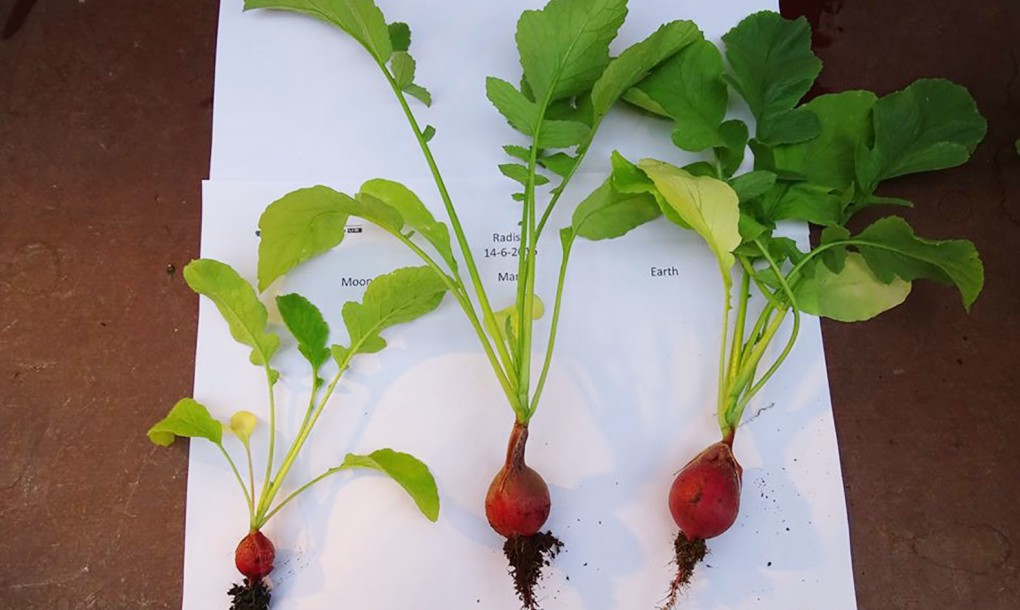
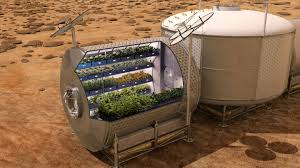
Astronauts who land on Mars in the future will face many challenges, including cold temperatures, high levels of radiation, and the absence of food and water on Mars. How will they survive there?

